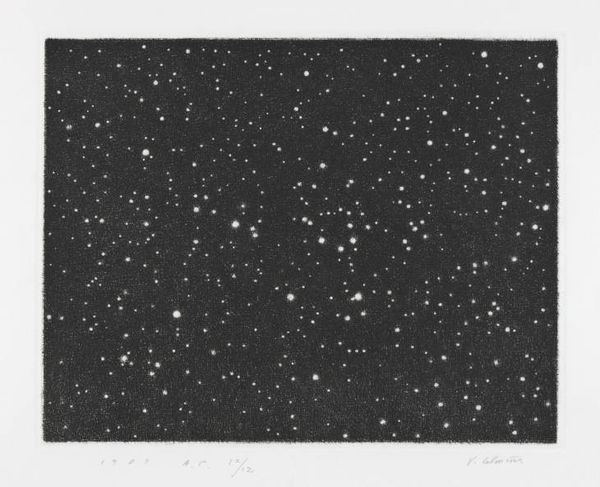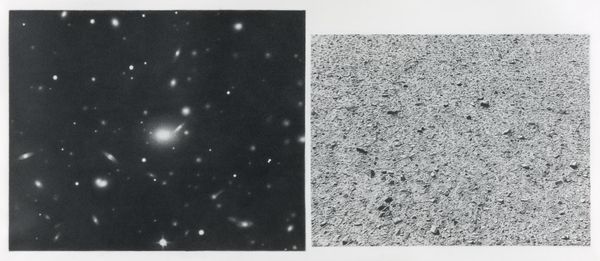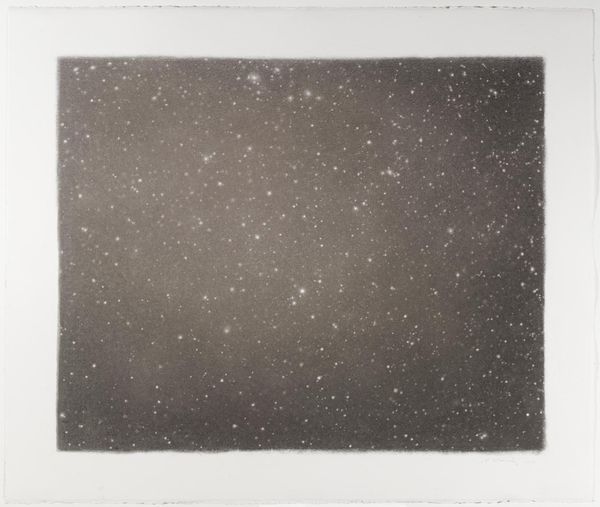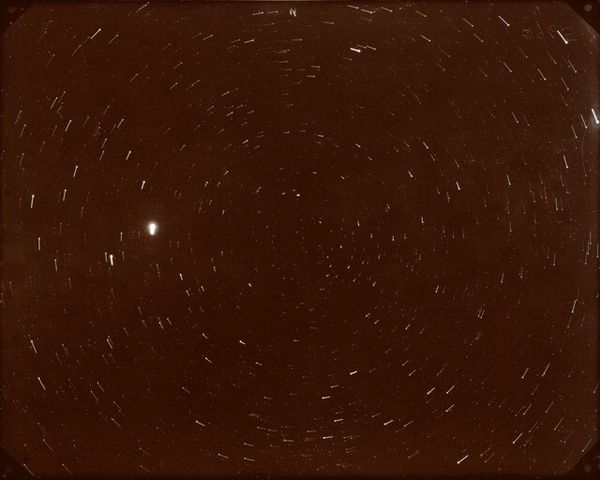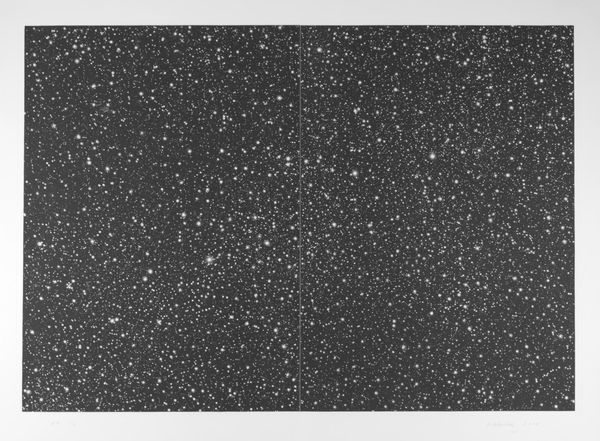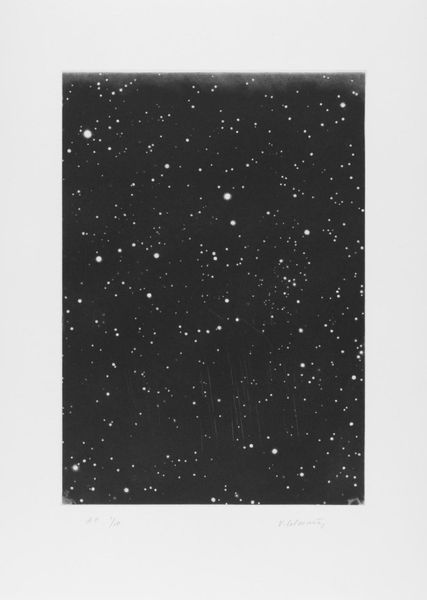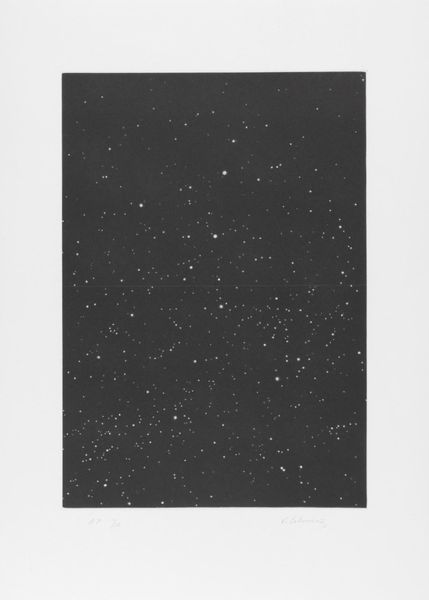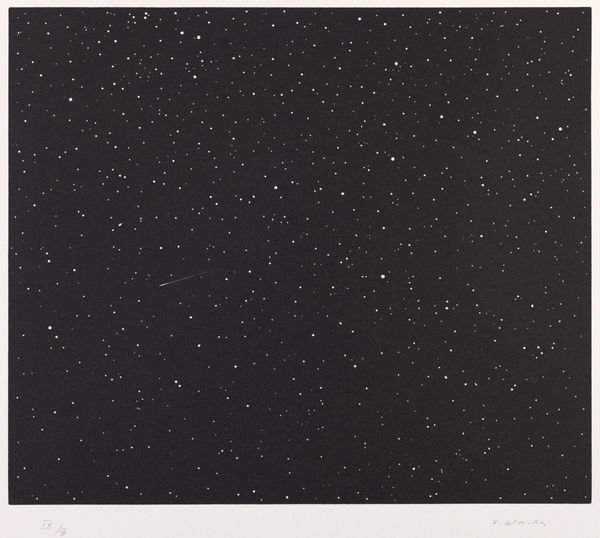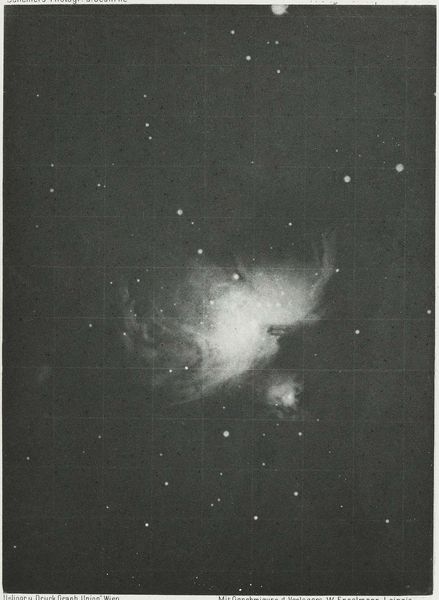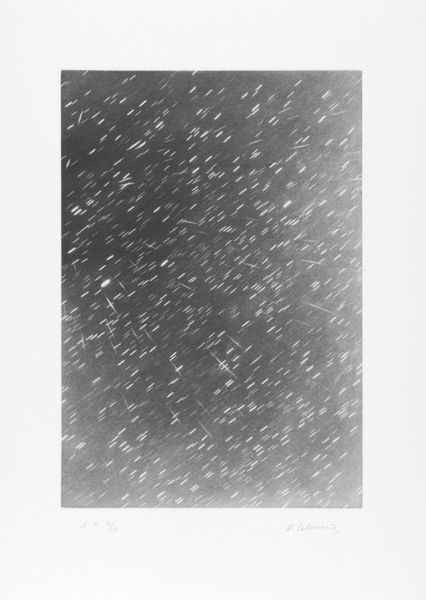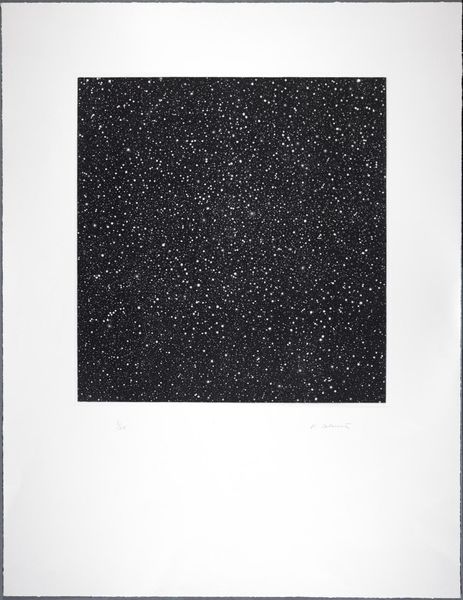
Copyright: Vija Celmins,Fair Use
Curator: Vija Celmins’ 1975 work, “Galaxy,” now housed at the Tate Britain, offers a fascinating view of the cosmos. It's striking, isn’t it? Editor: Absolutely. There's a quiet, almost melancholic feel. The stark contrast between the black background and the scattering of white dots…it gives the impression of endless space, but also isolation. What’s it made from? Curator: It's a print, based on a photograph. Celmins was deeply engaged in exploring photographic realism. The process itself—taking a mass-produced image and painstakingly recreating it by hand— raises interesting questions about labor. Editor: Yes, transforming something mechanically reproduced back into the realm of the handmade. She's mimicking the original process with much slower means. There is labor in every single point. Also consider, she reproduced it, she didn’t produce the source, implying commentary around who ‘owns’ space? Curator: Indeed, especially during the Cold War, where the Space Race between superpowers held enormous socio-political weight. The photographic source also grants an interesting layer here: while it resembles the natural, it in reality is an image born of machines. Editor: That duality is key, the interplay between organic and industrial. It’s also relevant that the subject itself – celestial bodies – is something largely inaccessible to our own hand. To mimic and reproduce is the closest many will get to these experiences, changing access of perception via a mass media that democratizes imagery. What do you make of that in its social history? Curator: That element of mediated experience is central, echoing concerns present at the time over media manipulation and its effect on shaping our perception of reality. Editor: True, by translating it into print, she invites a slower, more contemplative engagement, counteracting the fleeting nature of mass media imagery. Almost daring you to look past the technical to the artistry. Curator: A subtle but powerful critique of the spectacle. It encourages reflection on the very act of seeing, and what is presented. Editor: Precisely. It transforms what could be purely scientific documentation into a poetic meditation on existence and media’s impact. I come back to seeing points of human touch when reviewing her process here, an intimate mark in the industrial age. Curator: Agreed, seeing it in person prompts considerations around artistic choices shaping perception around the natural world, even the galactic one. Editor: I'll certainly think differently about labor going forward in experiencing art like this.
Comments
No comments
Be the first to comment and join the conversation on the ultimate creative platform.
